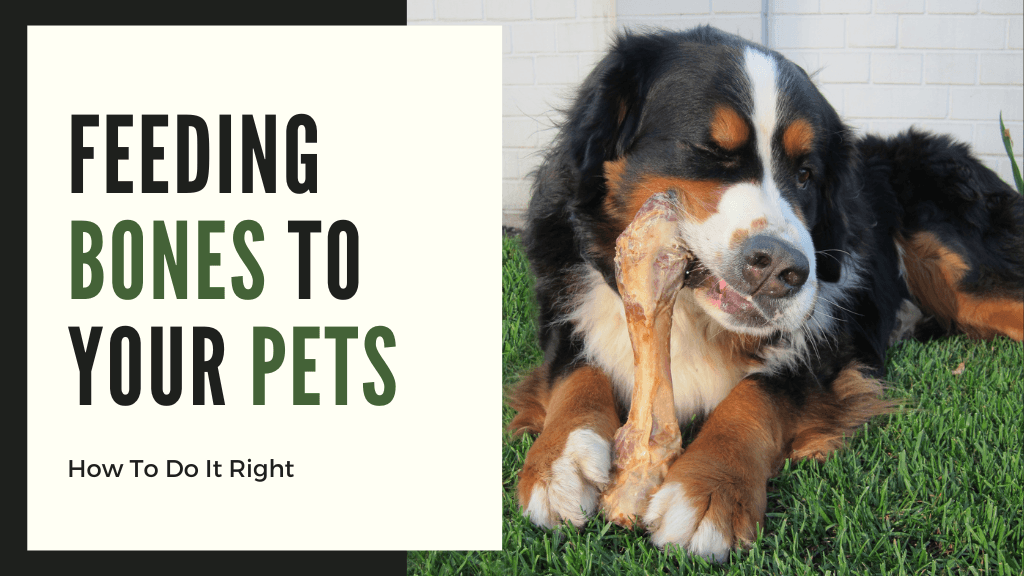Feeding Bones to Your Pets: How to Do It Safely
)
We all know the classic image of a dog happily gnawing on a bone, but there’s more to this picture than meets the eye. While the bond between dogs and bones seems natural, it's essential to be cautious when offering bones to your pets. Our aim is to provide you with the necessary knowledge to ensure bone feeding is both safe and beneficial for your furry friend.
In this article, we’ll debunk common myths, highlight the benefits, and share critical safety tips. We want to empower you to make well-informed decisions that keep your pet safe and happy. Let’s explore the key points:
Myth 1: Any Bone is Safe for Pets
Reality: This is a misconception. Not all bones are suitable for pets. Cooked bones, for instance, are highly dangerous as they can splinter into sharp pieces, posing a serious risk to your pet's internal organs. These shards can cause significant harm as they pass through the digestive system. Always avoid giving your dog any type of cooked bone, whether from your kitchen or the store.
Myth 2: Raw Bones Are Always Safe
Reality: Raw bones are generally safer than cooked ones, but they still come with their own risks. The size of the bone, its type, and your pet’s chewing habits all influence safety. Ideally, select a bone that’s about the size of your dog’s head. This reduces the risk of them biting off pieces that could cause blockages or other health problems.
Myth 3: Bones Are a Necessary Part of a Pet’s Diet
Reality: While bones provide certain nutritional benefits, they are not essential to your pet’s diet. A well-balanced diet designed to meet all their nutritional needs is far more important than relying on bones as a primary food source.
Benefits of Giving Bones to Pets
- Dental Health: Chewing raw bones helps remove plaque from your pet’s teeth, promoting better oral health and fresher breath.
- Mental Stimulation: Bones offer mental engagement, particularly for dogs with strong chewing instincts, helping to relieve boredom and prevent destructive behaviour.
- Nutritional Value: Raw bones contain important minerals such as calcium and phosphorus, which support bone health. However, remember that bones should complement, not replace, a balanced diet.
Understanding the Risks
While bones have their perks, they also come with risks. Be aware of potential choking hazards, splintering (especially from cooked bones), digestive issues, and the possibility of dental injuries from very hard bones.
How Often Should You Feed Bones?
Moderation is key when it comes to bone feeding. Aim to offer bones no more than once or twice a week, allowing your pet to chew for about 15-20 minutes. This schedule strikes a balance between the dental benefits and minimising the risk of overconsumption.
Safe Bone-Feeding Tips
- Always supervise your pet when they are chewing bones.
- Stick to raw, meaty bones that are appropriate for your pet’s size and breed.
- Avoid cooked bones entirely, as they are prone to splintering.

Maintaining a Balanced Diet
Bones are a great supplement but should not replace a complete, nutritious diet. Speak with our team to find the right balance for your pet’s overall health and well-being.
Monitoring Your Pet After Bone Consumption
After feeding bones, closely monitor your pet for any signs of discomfort, vomiting, or digestive issues. If they exhibit any negative symptoms, discontinue bone feeding and consult us for guidance. Paying attention to how your pet reacts will ensure bones remain a safe part of their routine.
Signs of a Problem
Look out for any signs of distress, such as vomiting, diarrhoea, or drooling after bone consumption. Also, check if your pet has difficulty passing stools or appears to be choking. If you notice any of these warning signs, call us immediately for assistance.
What about cats?
Feeding bones to cats requires extra caution. Cats have smaller frames and different dietary needs compared to dogs. While some raw bones may be suitable, they must be appropriately sized. Supervise cats closely to prevent choking or ingesting dangerous fragments.
Consult Our Expert Team
Before introducing bones into your pet’s diet, it’s a good idea to consult our experienced team. We can offer tailored advice to ensure your pet’s safety and well-being.
Our goal is to help you make informed decisions about feeding bones to your pets. With the right approach, you can safely offer bones, ensuring they remain a healthy, enriching treat for your pet. Remember, your pet's happiness and health are our top priority, and we're here to help you every step of the way.
| Tags:Client InformationHealth AdviceProactive Pet Care |
)
